Back when we were running a sheep dairy, shearing day was something to be endured, for the health of the sheep. But now that we have a fiber-based business, shearing day is the most important day of the year. Last Thursday was one of two of our annual shearing days; we sheared our 46 bred ewes, about a month before they are due to start lambing.
The weather was kind to us, and after three weeks of unrelenting rain (and Lolo’s absence on vacation in Mexico) we were doubly blessed with Lolo’s return, and with the return of dry weather. The last storms of our atmospheric river passed through on the night before shearing, so we set up the lambing barn with a cozy nest of straw bedding, and brought the ewes in for the night to keep them dry. A wet sheep is kind of like a soggy sponge, and VERY difficult to shear. Not to mention how difficult it is to handle that soggy fleece. So it is very important that the sheep be dry on shearing day.
Thursday morning our first challenge was to remove all their coats. Melinda had the idea to crowd all 46 ewes into the two vacant box stalls in that barn, so we could grab and easily disrobe them.
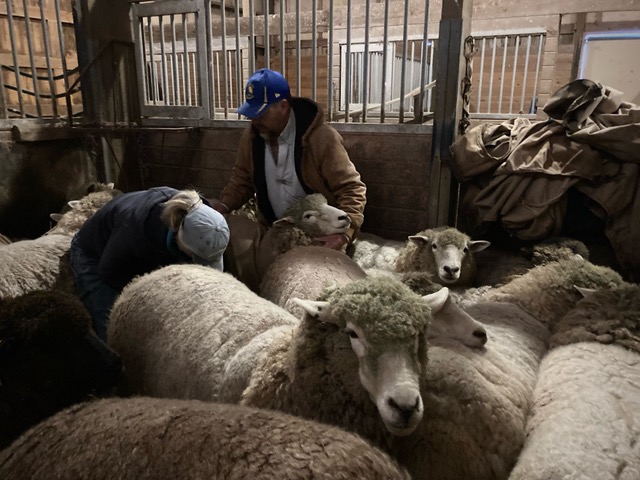

We don’t get to see our sheep naked very often, just looking like wooly sheep, so we had to take a moment and record the event!
Then we got busy moving the ewes to the hay barn, former home of our milking parlor, where we had set up our corrals inside, to help us deliver the ewes to John, our shearer. We moved the ewes into a pen that was surrounded by movable panels, so we could shrink it to contain the ewes tightly as their numbers diminished. The pen funneled them into our chute, which delivered them to Lolo, who held each ewe briefly before handing her to John. Meanwhile, Melinda caught the ewe John had finished with, and as he sheared the next ewe, Lolo and Melinda fitted the recently-shorn ewe with a new coat.
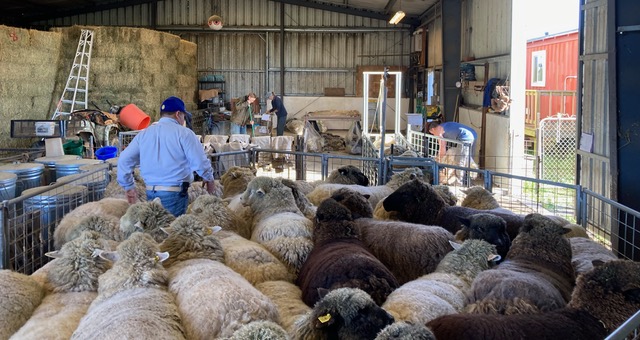
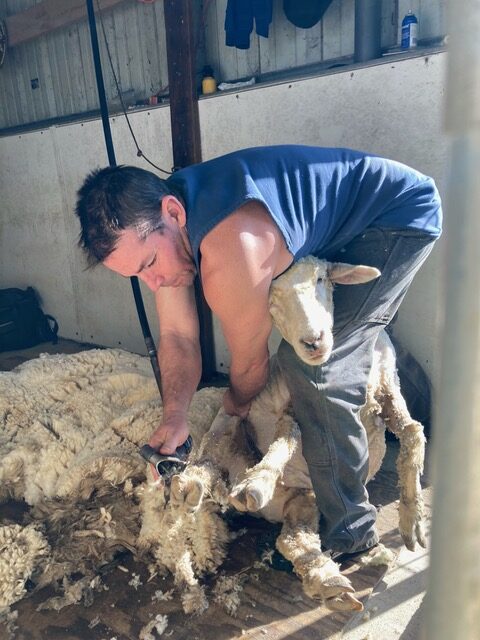
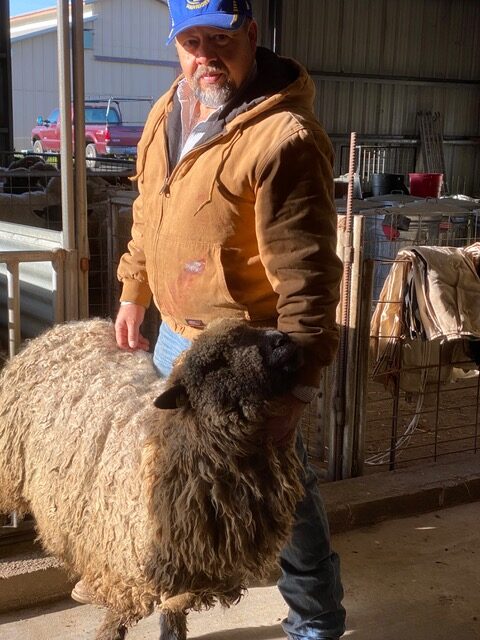
Meanwhile, Lisa and I dealt with the recently shorn fleeces. Lisa gathered up each freshly shorn fleece and together she and I flung it onto the skirting table, where I skirted it, tearing off the edges that have coarser wool, poopy bits and alfalfa debris. Then I took samples for lab analysis to determine the fiber diameter for each ewe, labeled the fleece, and with Lisa’s help, bagged it. Lisa swept the floor so it was clean to receive the next fleece John was shearing off.
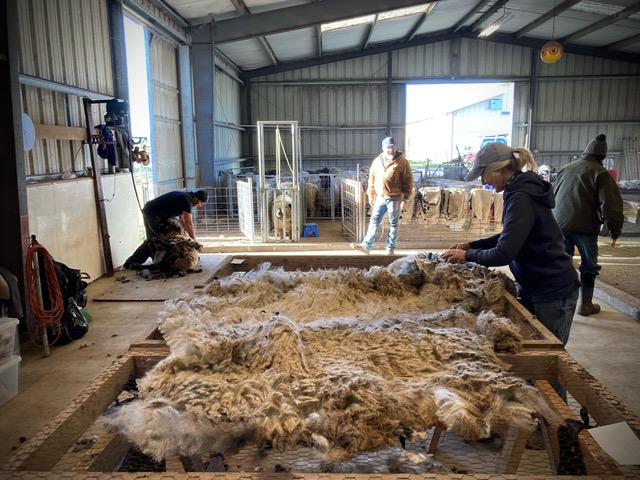
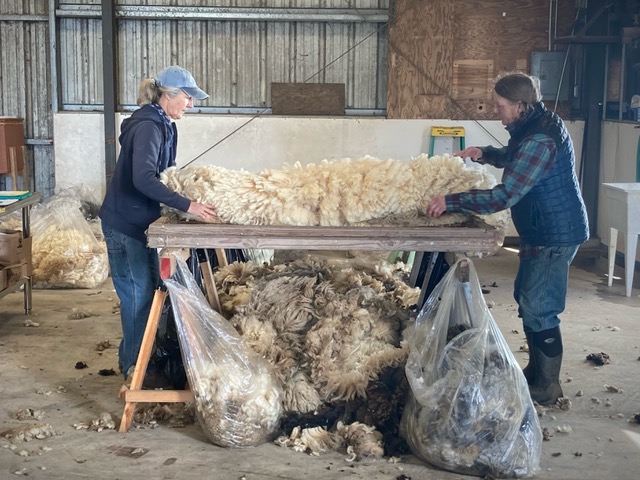
Although all of us humans were working at maximum speed, the ewes who were too shy to enter the chute voluntarily wound up spending most of their day in idle waiting, in an ever-shrinking pen.
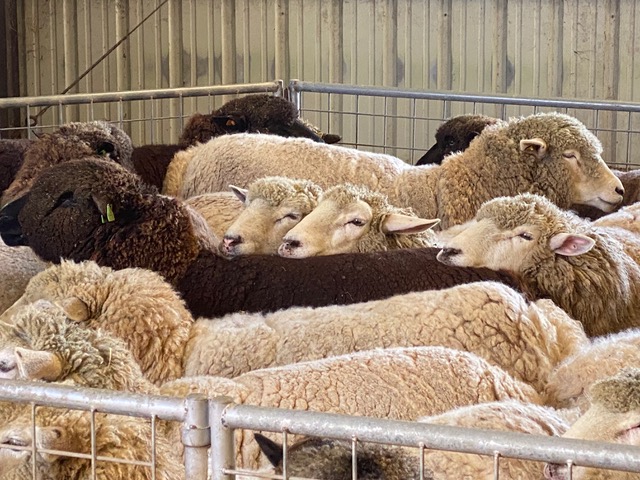

At the end of the day, the ewes, clothed in their new coats, and minus their woolen underwear, headed to the front pasture for dinner before retreating to the barn for a night in warm surroundings while they acclimatized to life without their fleeces. All the fleeces were tucked safely into the old creamery building, and all of us shepherds headed home to nurse our aching muscles.

